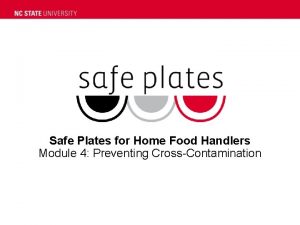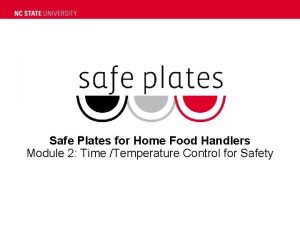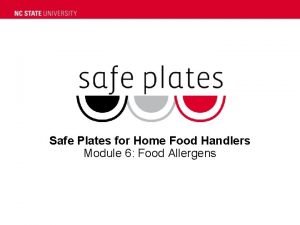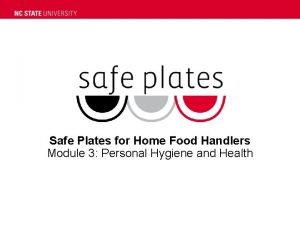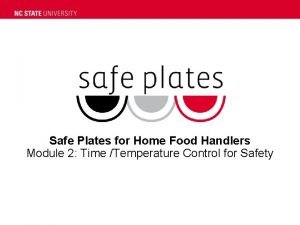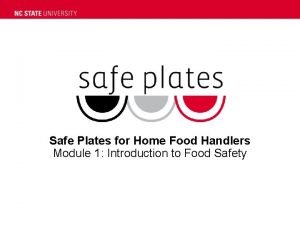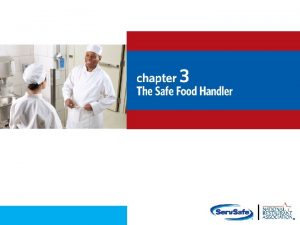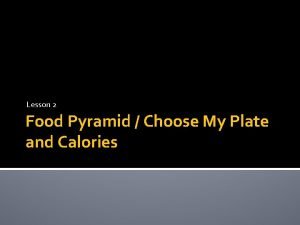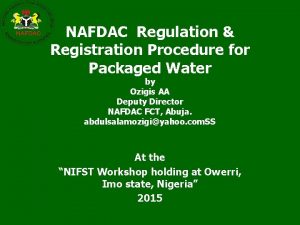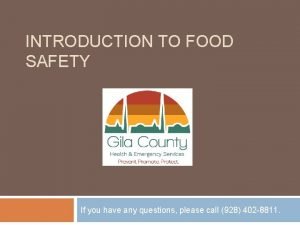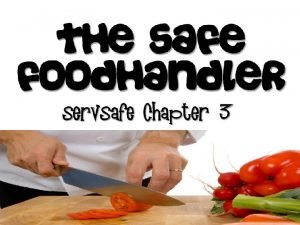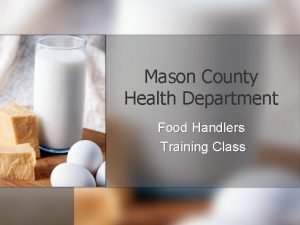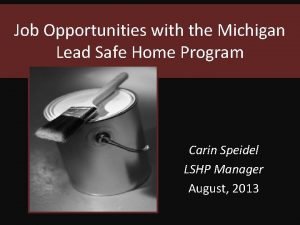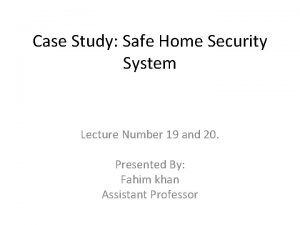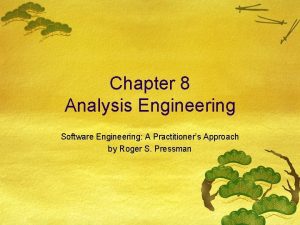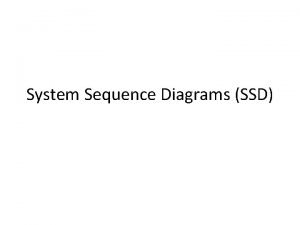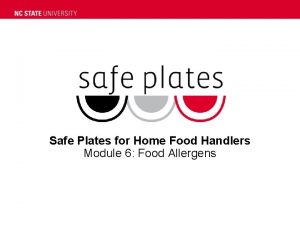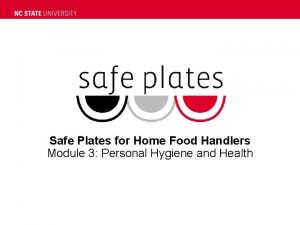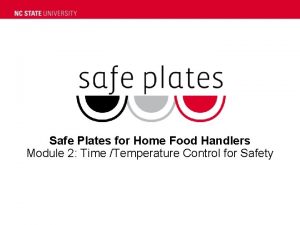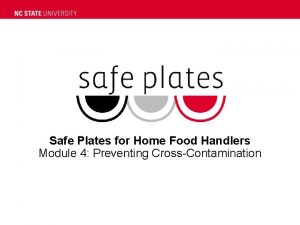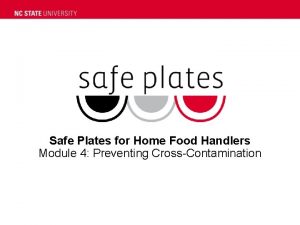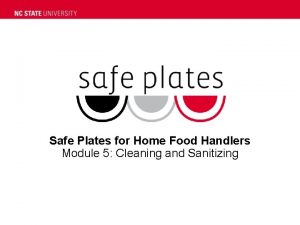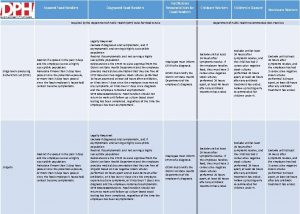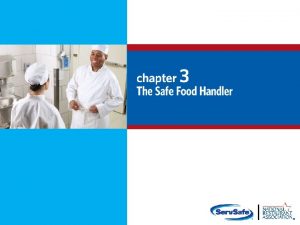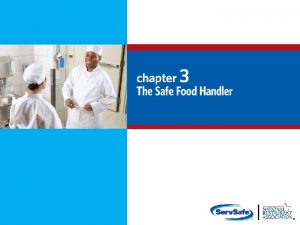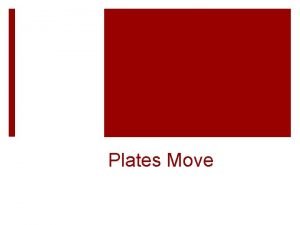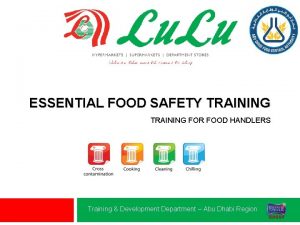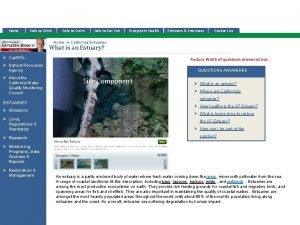Safe Plates for Home Food Handlers Module 4






















- Slides: 22

Safe Plates for Home Food Handlers Module 4: Preventing Cross-Contamination

Case Study

What Happened Family Restaurant in United Kingdom • 75 people ended up sick with Salmonella after eating at the same restaurant • 5 people went to the hospital • Multiple employees were also sick

What They Found • Raw chicken had been washed in the produce prep sink • Salad vegetables were later prepped in that sink • Cooked pasta was cross contaminated with Salmonella

Discussion Do you wash chicken before preparing it? Why do you think this is so common if it is risky?

Learning Objectives • Prevent contamination of ready-to-eat food and ice for consumption • Determine when to replace and use clean and sanitized equipment and utensils • Identify and prevent potential contamination events associated with consumer self-service areas • Describe how to store food to prevent contamination • Identify how to correctly store cleaned and sanitized utensils and equipment

Key Terms • Contamination - is the presence of substances in food that can be harmful to humans • Cross-contamination - is the transfer of a harmful substance from one food item to another, usually from raw to cooked or ready-to-eat food

Preventing Cross. Contamination



Cross-Contamination • Contamination can be transferred in many different ways – Unclean hands and poor hygiene – Improperly cleaned and sanitized prep areas, equipment, utensils – Standing or dripping water – Improperly stored food and chemicals • Preventing cross-contamination also includes personal hygiene, cleaning and sanitizing

Preparation and Service • Use properly cleaned and sanitized utensils for serving food, drinks and ice • Use single use gloves or utensils to prepare and serve washed fruits and vegetables • Regularly replace utensils after any chance of contamination • Utensils should be replaced at least every four hours when used at room temperature

Ice Used for Food • Ice used for food should be protected from contamination • Food, utensils and containers should not be stored in machines holding ice for consumption • Ensure that the ice machine is maintained cleaned and sanitized

Food Displays • Food should be displayed to prevent contamination • Self-serve items should be covered by a lid or sneeze guard • Each container should have its own utensil replaced with clean, sanitized ones a minimum of every four hours

Monitoring Self-Serve Areas • Customers must use a clean plate, dish or container each time they visit the self-service line • If someone unwraps an item, uses hands to serve food or otherwise contaminate the product it must be thrown out • Watch to see if utensils are returned to the proper containers and handles stay out of the food

Preventing Cross. Contamination in Storage

Food Storage • Food should be stored in a way that prevents contamination • Use durable containers securely covered with wrap, foil or lids • Label containers with contents and date • Store foods in cold storage in order of cooking final temperature

Proper Cold Storage

Storing Utensils • Clean, sanitized utensils should be stored to prevent contamination • Storage locations and containers should be cleaned and sanitized

Storing Utensils • Utensils used with TCS foods can be stored: – On a clean, sanitized prep surface – Under running water so that utensil is adequately rinsed – In container of water 135°F or above • Utensils used with non-TCS foods can be stored: – In a clean, protected location – In food containers if handle remains above the food

Discussion Think about making a turkey sandwich. How many steps are involved from getting the ingredients to eating the sandwich? How many opportunities are there for crosscontamination?

Review • Preventing contamination of ready-to-eat food and ice for consumption • Potential contamination events with self-service areas • Replacing and storing cleaned and sanitized equipment and utensils • Storing food to prevent contamination
 Servsafe module 4
Servsafe module 4 Tcs food
Tcs food Module 6 food
Module 6 food Reinstated food handler
Reinstated food handler Tcs food
Tcs food Safe plates module 1
Safe plates module 1 Food handlers can contaminate food when they
Food handlers can contaminate food when they Hand antiseptics may only be used if they are
Hand antiseptics may only be used if they are Myplate
Myplate Safe feed safe food
Safe feed safe food Nafdac food handlers test
Nafdac food handlers test Gila county food handlers
Gila county food handlers When can a food handler with jaundice return to work
When can a food handler with jaundice return to work 123 food handlers
123 food handlers Safe people safe places
Safe people safe places Michigan lead safe home program
Michigan lead safe home program Use case diagram for safehome security system
Use case diagram for safehome security system Good evening stay safe
Good evening stay safe Activity diagram for access camera surveillance
Activity diagram for access camera surveillance Safe at home participant
Safe at home participant Good morning tuesday stay safe images
Good morning tuesday stay safe images Draw the context level dfd for the safe home software.
Draw the context level dfd for the safe home software. On an ssd, a dashed arrow usually represents what?
On an ssd, a dashed arrow usually represents what?
